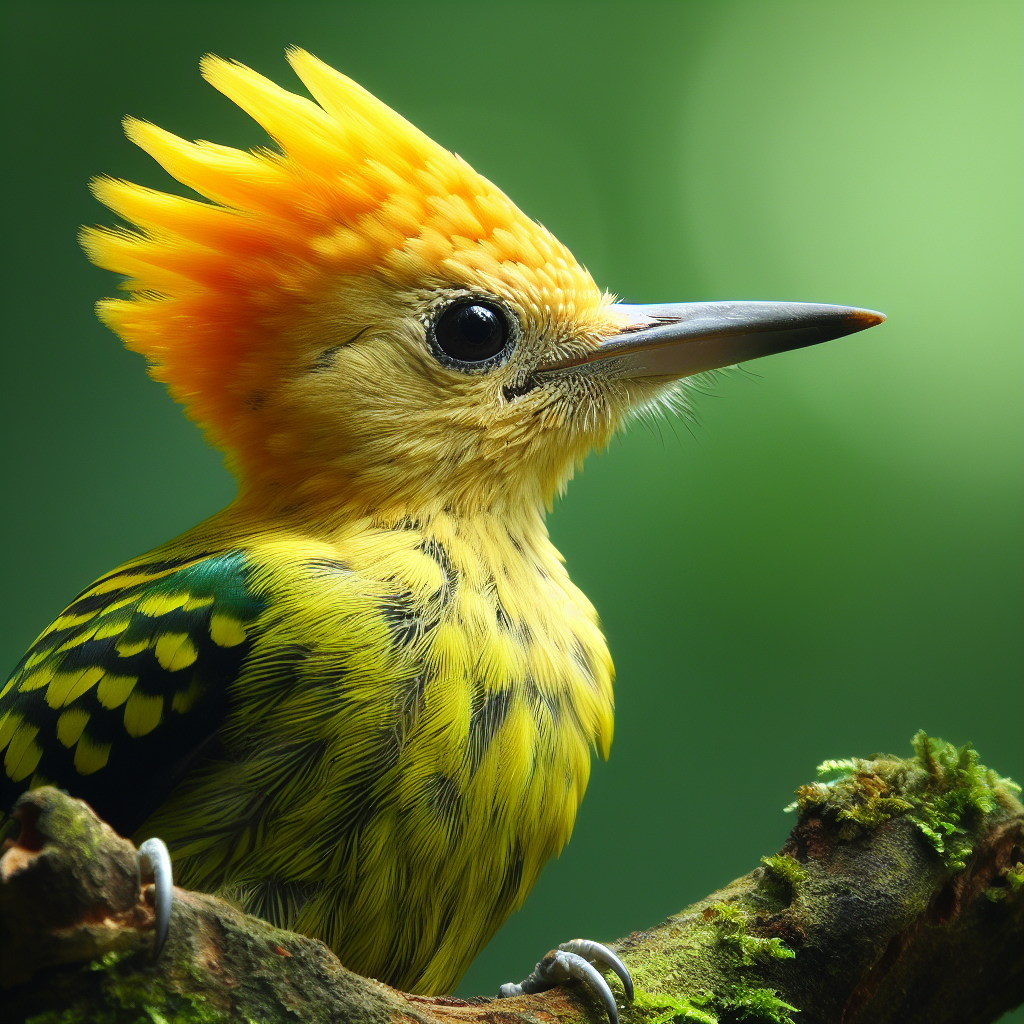Most beautiful small birds - Sykalo Eugen 2024
Greater Yellownape Woodpecker (Chrysophlegma flavinucha)
Identification:
- Species name: Greater Yellownape Woodpecker
- Scientific name: Chrysophlegma flavinucha
- Family: Picidae (Woodpeckers)
- Order: Piciformes (Woodpeckers)
- Subclass: Neornithes (Modern birds)
- Class: Aves (Birds)
Description:
- Size: Medium-sized woodpecker, about 23-25 cm (9-9.8 in) long with a wingspan of 36-38 cm (14-15 in).
- Body shape: Stocky and compact, with a strong neck, a long, straight chisel-like beak, and a stiff tail used for support while drumming.
- Plumage color:
Males: Emerald green back and wings, bright yellow nape ("fan" of feathers at the back of the head), black head and chest with white streaks, white underparts.
Females: Similar to males but without the black chest and with less defined white streaks.
Black legs.
Dark eyes.
- Beak: Long, straight, and black, well-suited for excavating wood and capturing insects.
Behavior:
- Method of feeding: Primarily insectivorous, drumming on trees to flush out hidden larvae and probing holes with their long beaks. Also eats fruit and sap.
- Reproduction: Builds cavities in dead trees. Lays 2-3 white eggs. Both parents care for the young.
- Movement: Resident in most of its range, with some local dispersal in response to food availability.
- Communication: Loud tapping and drumming sounds, along with high-pitched calls and rattles. Males have a complex song for defending territory and attracting mates.
Ecology:
- Habitat: Mature forests, particularly near rivers and streams.
- Diet: Insects (larvae and adults), fruit, sap.
- Hunting methods: Drums on trees to flush out insects, then probes holes with its long beak. May also glean insects from leaves and branches.
Distribution: Found in Southeast Asia, from Nepal and Bhutan to Indonesia and the Philippines.

The Greater Yellownape Woodpecker — that audacious drummer echoing through Asian forests, a flash of crimson and gold against the emerald tapestry of leaves. This seemingly industrious resident might appear like a simple tree-tapper at first glance, but beneath its bold plumage and incessant hammering lies a treasure trove of fascinating facts and adaptations that will leave you enthralled by this avian architect and percussionist of the woods:
Masters of Excavation: Forget ordinary beaks; the Greater Yellownape possesses a powerful chisel-like tool. They pound with impressive force and precision, drilling deep holes into trees in search of hidden grubs and insects. Imagine them as feathered jackhammers with built-in miniature bulldozers!
Unexpected Tongue Technique: Don't underestimate their sticky prowess! The Greater Yellownape's tongue is long, barbed, and sticky, perfectly adapted for reaching deep into crevices and extracting unsuspecting prey. Their tongues even vibrate like feathered fishing rods, luring out buried bugs with irresistible tremors!
Hidden Feasting Technique: Their diet isn't just grubs. Yellownapes are opportunistic omnivores, readily adapting to seasonal changes and resources. From berries and fruits to sap and even tree frogs, their varied menu keeps them fueled for their energetic drumming sessions. Think of them as feathered gourmands with built-in miniature buffets!
Unexpected Acrobatic Talents: Their movements are nothing short of impressive. Yellownapes scale tree trunks with acrobatic dexterity, clinging to branches with ease and maneuvering through dense foliage with surprising agility. Picture them as feathered parkour experts with built-in mini climbing gear!
Communal Drumming Rituals: Forget solitary drumming; Yellownapes engage in synchronized percussive displays. Groups of these feathered drummers pound rhythms on hollow trees, communicating territory, attracting mates, and even warding off rivals. Talk about avian rock bands with built-in amplified stages!
Symbiotic Symphony: Greater Yellownapes play a vital role in the forest ecosystem. By excavating holes in trees, they create nesting cavities for themselves and other bird species, fostering biodiversity and contributing to the vibrant tapestry of life in the woods. These feathered architects contribute to the flourishing of many creatures.
Cultural Charmers: In some Asian cultures, the Yellownape is associated with strength, perseverance, and the power of nature. Its bold plumage and incessant drumming inspire awe and respect, making it a treasured symbol of the region's resilient forests.
Unexpected Habitat Adaptations: Did you know? Different populations of Yellownapes have adapted their calls and drumming patterns to their specific habitats. From the echoing drums of Himalayan forests to the rapid taps of bamboo groves, these feathered percussionists showcase regional variety.